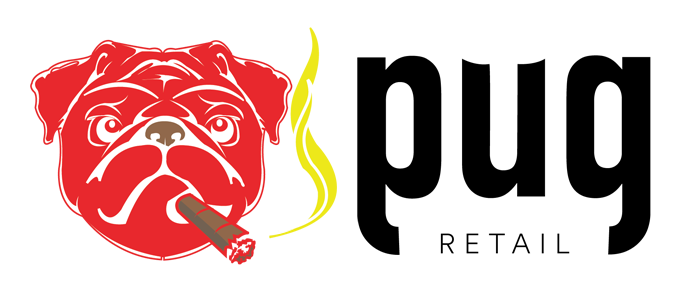What measures do you take to protect your business from loss?
In any retail environment, implementing a robust loss prevention strategy is essential. Whether you’re a seasoned retailer or just starting out, understanding how to minimize losses can significantly impact your bottom line. Here, we’ll wander through various aspects of effective loss prevention strategies that cater specifically to your needs.
Understanding Loss Prevention
Loss prevention refers to the policies and procedures designed to minimize the amount of loss experienced by a retailer. Losses can arise from various sources, including theft, fraud, and operational errors. By adopting a solid loss prevention strategy, you not only protect your assets but also create a more secure environment for your employees and customers.
Why is Loss Prevention Important?
Losses can easily spiral out of control if not monitored correctly, impacting your profit margins. A well-implemented loss prevention strategy can:
- Reduce shrinkage: Shrinkage refers to the loss of inventory due to theft or errors. By effectively managing shrinkage, you can improve profitability.
- Enhance customer trust: A secure environment makes customers feel safe, encouraging them to shop more often.
- Promote employee accountability: When employees are educated about loss prevention, they become more vigilant and responsible.
Steps to Create an Effective Loss Prevention Strategy
Creating a loss prevention strategy involves various steps that cater to the unique aspects of your business. Here’s how you can get started:
Assess Your Current Situation
Before implementing any new strategies, take a moment to assess your current loss prevention measures. Identify areas that may be vulnerable and analyze past incidents of loss. This assessment allows you to pinpoint specific weaknesses and opportunities within your organization.
Educate Your Employees
Your employees are your first line of defense against loss. Educating them on loss prevention practices is crucial. Here’s how to approach this:
- Provide training sessions: Regular training sessions will keep employees informed about theft prevention and customer service.
- Create a culture of accountability: Encourage employees to take ownership of loss prevention. When they feel responsible, they’re likely to be more vigilant.
- Discuss real-life scenarios: Use specific examples related to your business to illustrate various types of loss and how to prevent them.
Implement Technology Solutions
In today’s digital age, technology can play a significant role in loss prevention. Consider utilizing the following tools:
- POS Systems: Implementing a comprehensive POS system like pugretail.com specifically designed for small businesses can help track sales, manage inventory, and identify patterns of loss. With over 30 years of POS support from Bighairydog.com, you can be confident that you have the necessary resources at your disposal.
- Surveillance Systems: Installing security cameras can deter would-be thieves and provide evidence if theft occurs. Ensure the cameras cover critical areas like entrances, exits, and high-value inventory.
- Inventory Management Tools: Use technology to keep accurate records of inventory levels and sales data. Automated alerts can notify you of discrepancies, enabling a proactive approach to loss prevention.
Develop a Strong Policy Framework
Implementing clear policies is essential for any successful loss prevention strategy. Consider these points:
- Create specific guidelines: Clearly outline what is considered unacceptable behavior, both for customers and employees.
- Establish reporting mechanisms: Make sure employees know how to report suspicious activity or loss incidents. Ensure these mechanisms are simple and accessible.
- Consistent enforcement: Policies must be enforced consistently to ensure their effectiveness. Communicate that failure to adhere to policies will lead to consequences.
Monitor and Analyze Data
Regularly monitoring data related to loss prevention is key to making informed decisions. Here’s how you can utilize data effectively:
- Sales Reports: Regularly analyze sales reports to identify patterns of loss or potential theft during specific shifts or times of the year.
- Inventory Audits: Conducting frequent inventory audits, both scheduled and surprise, can help you spot discrepancies and patterns of theft or error.
- Loss Prevention Metrics: Develop key performance indicators (KPIs) to measure the success of your loss prevention strategies. These can include shrink percentage, incident report frequency, and employee compliance rates.
Engage with Technology and Innovations
In a world that’s constantly evolving, staying ahead of the latest technology and trends can help prevent loss. Consider these advancements:
- Mobile Inventory Tracking: Using mobile devices for real-time inventory management can streamline operations and minimize errors leading to loss.
- Artificial Intelligence: Consider systems that utilize AI to analyze behavioral patterns in customer shopping which can help identify potential theft.
Establish a Customer-Focused Environment
A positive customer experience not only encourages sales but also acts as a deterrent to theft. Here are some ways to foster a customer-friendly environment:
- Engaged Staff: Friendly and attentive staff can lead to improved customer interactions, which in turn increases accountability both for customers and employees.
- Store Layout: Arrange your store layout to minimize blind spots. This layout reduces opportunities for theft while also enhancing the overall shopping experience.
Collaborate with Local Authorities
Building relationships with local law enforcement can enhance your loss prevention strategy. Consider forming partnerships to stay informed about local crime trends and prevention tips. You might:
- Invite representatives for talks: Local officers can provide valuable insights on local theft trends and share prevention tactics.
- Participate in community watch programs: Engaging with community safety initiatives can create a network of businesses looking out for each other.
The Role of Pugretail.com and Bighairydog.com in Your Loss Prevention Strategy
Incorporating advanced POS technology is fundamental to your loss prevention strategy. Pugretail.com, our POS system tailored for small businesses, provides a wealth of features to help track sales and inventory efficiently.
With over 30 years of POS support from our parent company, Bighairydog.com, you can rely on our expertise to enhance your loss prevention measures. Implementing our POS system will provide you with the tools and resources necessary to minimize shrinkage and streamline inventory management.
Summary of Key Components for an Effective Loss Prevention Strategy
| Component | Description |
|---|---|
| Employee Education | Ongoing training to create a vigilant workforce trained to implement loss prevention practices. |
| Technology Implementations | Utilizing POS systems, surveillance, and inventory management tools to track sales and deter theft. |
| Policy Development | Establishing and consistently enforcing clear guidelines for employee and customer behavior. |
| Data Monitoring | Regular review of sales reports, inventory audits, and key performance metrics to inform decisions. |
| Customer Engagement | Creating a friendly environment that discourages theft through engaged staff and accessible store layouts. |
| Local Collaboration | Building relationships with law enforcement and community safety initiatives to enhance security. |
Final Thoughts
A well-rounded loss prevention strategy can protect your assets, promote customer trust, and create an accountable workplace. By adopting comprehensive measures that involve assessment, education, technology, and collaboration, you can significantly reduce the risk of loss in your retail business.
So, take these strategies to heart and implement them in your operations. You’ll not only safeguard your business but also create a safe and enjoyable environment for your customers and employees. Achieving effective loss prevention doesn’t just translate to financial savings; it also fosters a culture of security and trust that can lead to lasting success.

